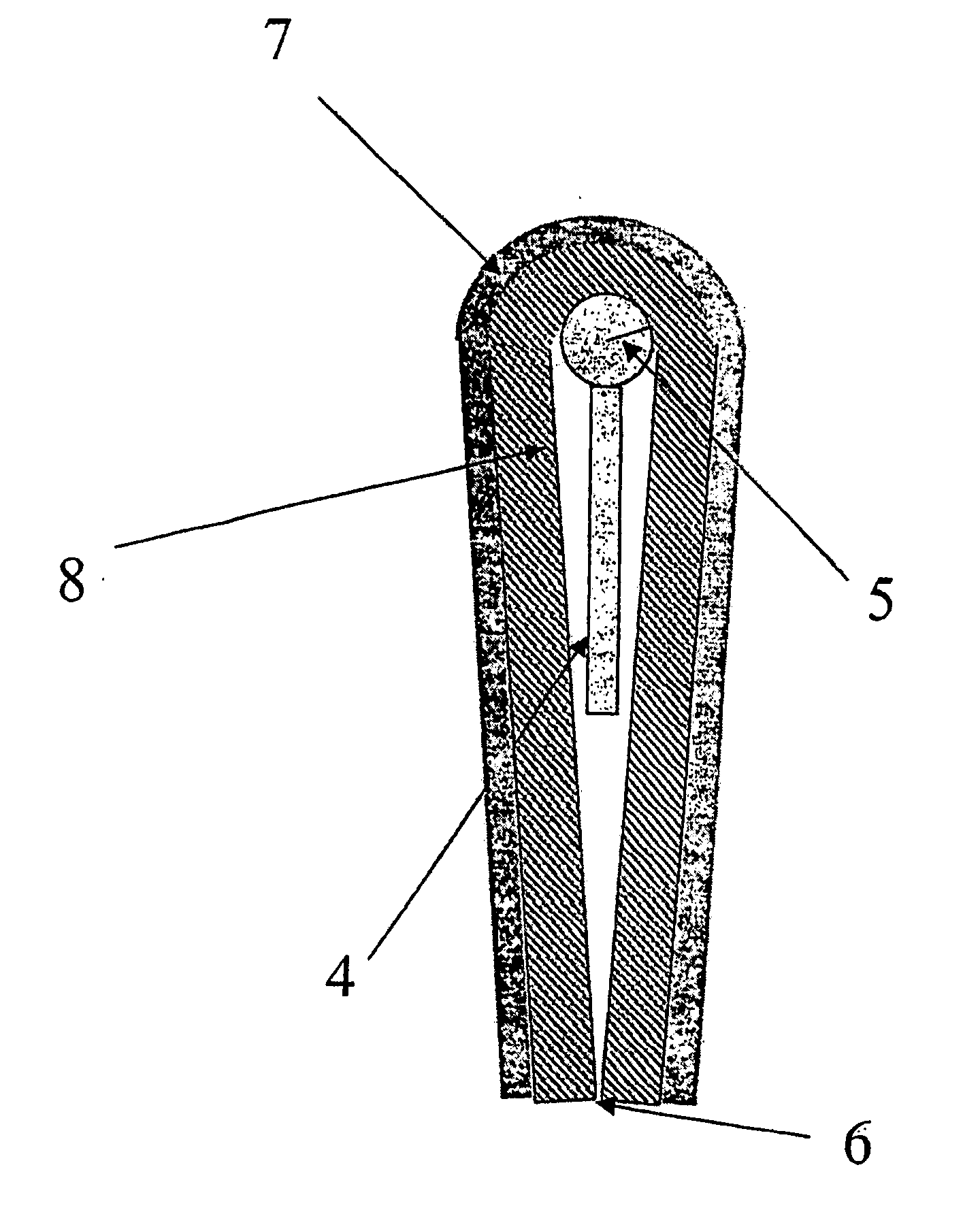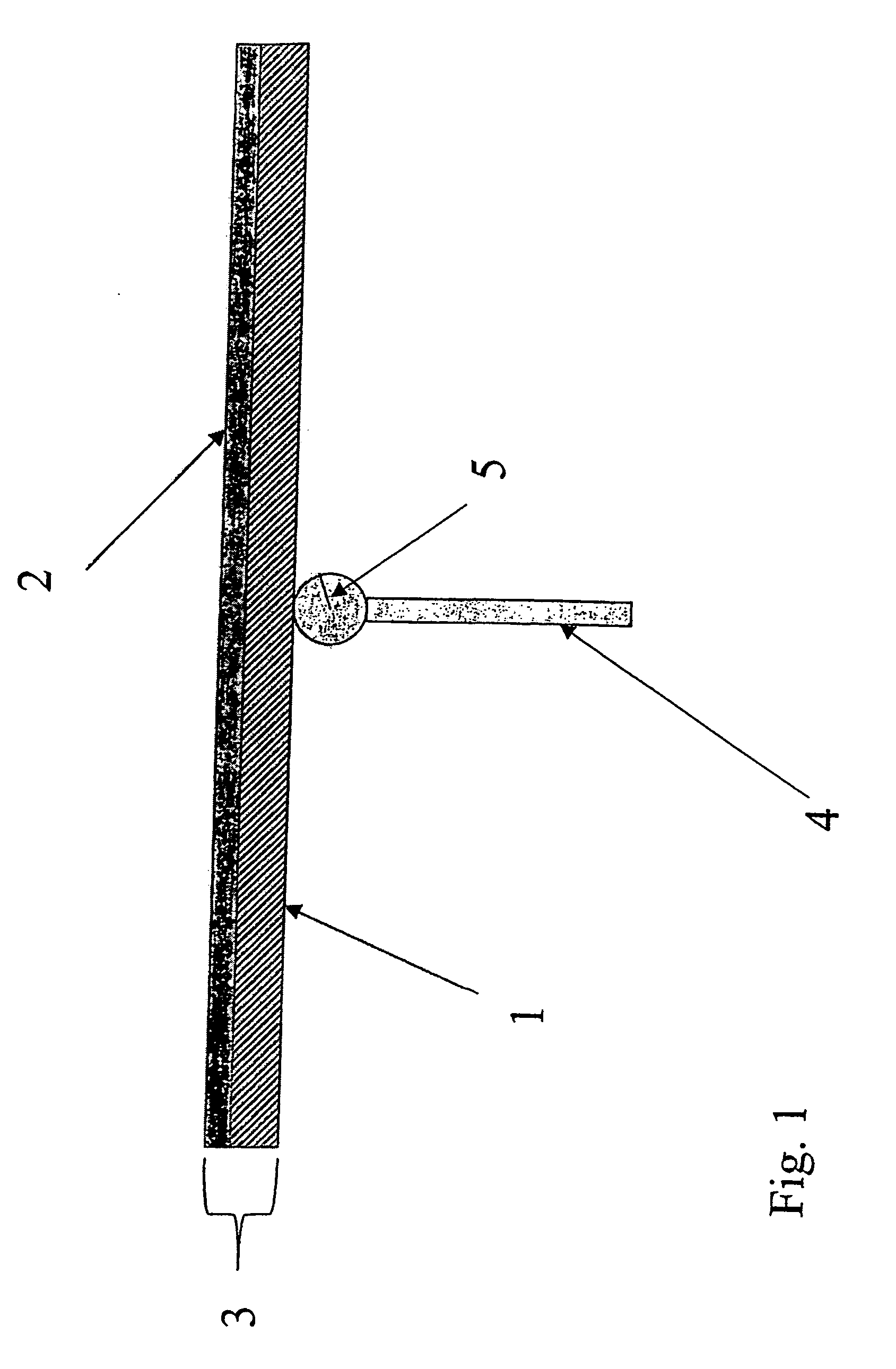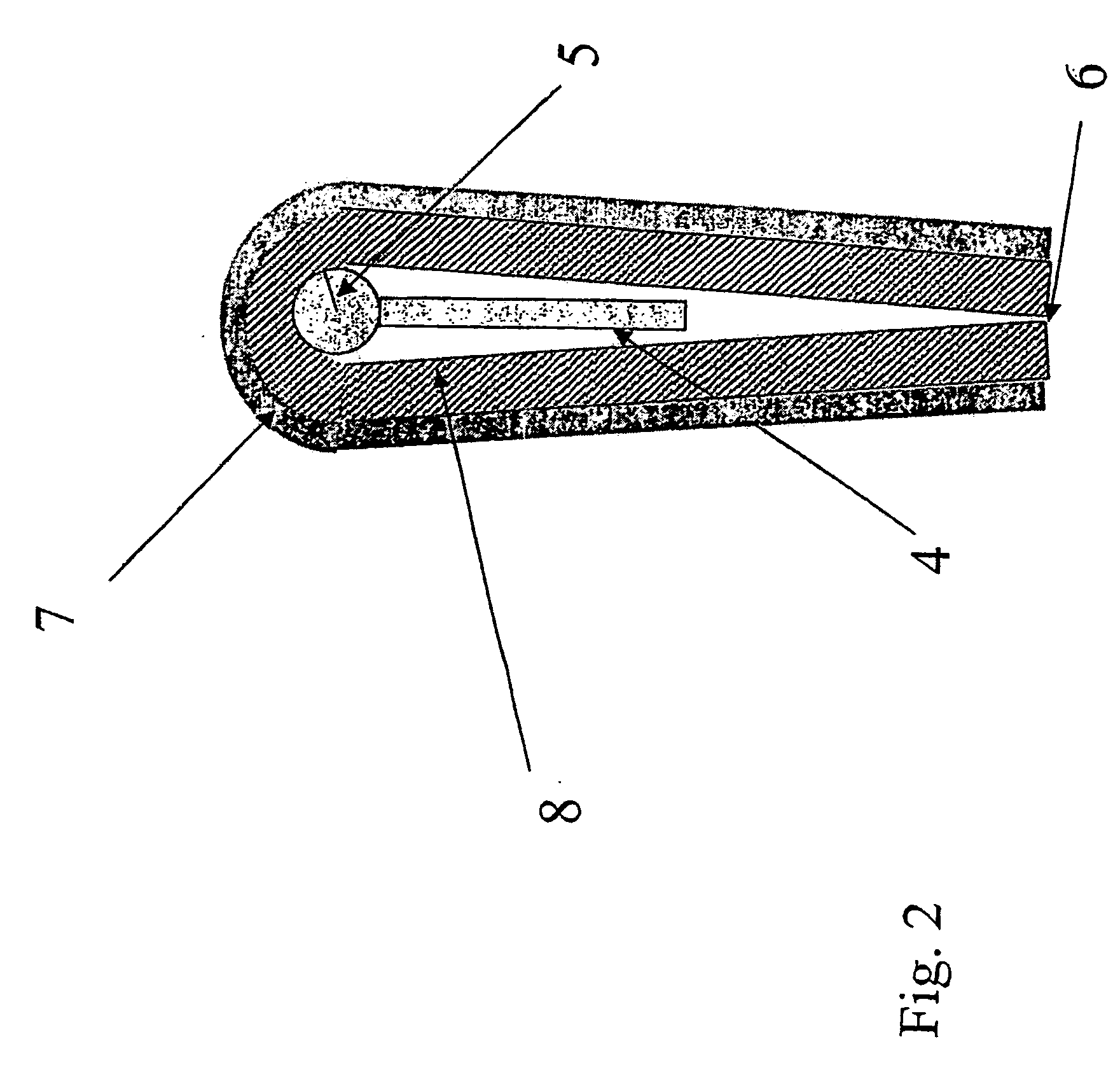Stainless Steel Strip Coated With A Decorative Layer
a technology of decorative layer and steel strip, which is applied in the direction of vacuum evaporation coating, superimposed coating process, transportation and packaging, etc., can solve the problems of low yield, low quality, and inability to meet quality and productivity requirements, and achieve cost-efficient and productive, excellent adhesion of decorative layer, and good adhesion
- Summary
- Abstract
- Description
- Claims
- Application Information
AI Technical Summary
Benefits of technology
Problems solved by technology
Method used
Image
Examples
example 1
[0070] A 0,280 mm thick AISI 304 substrate material in a nominal composition of max 0,08% C, max 1% Si, max 2% Mn, 18.0-20.0% Cr, 8.0-10.0% Ni and rest essentially Fe, and in annealed condition coated by using a strip speed of about 10 m / min with electron beam evaporation, with about 1 um TiO directly on the substrate to get a bronze colour. The coated specimen with the TiO layer passed the bending test and also the scotch tape test. See sample 1 in Table 1 for the bending test result, scotch tape test and the measured L*, a* and b* colour values.
example 2
[0071] A 0,317 mm thick AISI 304 substrate material in a nominal composition of max 0,08% C, max 1% Si, max 2% Mn, 18.0-20.0% Cr, 8.0-10.0% Ni and rest essentially Fe, and in cold rolled condition coated using a strip speed of minimum 3 m / min by sputtering with TiN, TiAlN in several step to get multilayered structures. The multilayered coated material gets colours of blue, green and violet. The total layer thickness is 45 nm for the blue strip, 50 nm for the purple strip and 100 nm for the green strip. The specimens with the coloured layers all passed the bending test and also the scotch tape tests. See samples 2-4 table 1 for the bending test result, scotch tape test and the measured L*, a* and b* colour values.
example 3
[0072] A 0,317 mm thick AISI 304 substrate material in a nominal composition of max 0,08% C, max 1% Si, max 2% Mn, 18.0-20.0% Cr, 8.0-10.0% Ni and rest is essentially Fe, in cold rolled condition coated by using a strip speed of minimum 3 m / min by sputtering with TiAlN to get a black colour. The coated specimen with the black layer passed the bending test and also the scotch tape test. See sample 5 in Table 1 for the bending test result, scotch tape test and for the measured L*, a* and b* colour values.
PUM
| Property | Measurement | Unit |
|---|---|---|
| thickness | aaaaa | aaaaa |
| thickness | aaaaa | aaaaa |
| thickness | aaaaa | aaaaa |
Abstract
Description
Claims
Application Information
 Login to View More
Login to View More - R&D
- Intellectual Property
- Life Sciences
- Materials
- Tech Scout
- Unparalleled Data Quality
- Higher Quality Content
- 60% Fewer Hallucinations
Browse by: Latest US Patents, China's latest patents, Technical Efficacy Thesaurus, Application Domain, Technology Topic, Popular Technical Reports.
© 2025 PatSnap. All rights reserved.Legal|Privacy policy|Modern Slavery Act Transparency Statement|Sitemap|About US| Contact US: help@patsnap.com



